Last updated: 25 June 2023
Did you know that located a mere 90 min drive from East London is where the single most important battle in English history took place?
The town of Battle in East Sussex, is the home of Battle Abbey, the location where William, Duke of Normandy, battled the newly-crowned King Harold for the English throne on 14 October 1066. Yes, if you’re looking for historic places to visit in England then Battle Abbey should be right at the top of your list. As history enthusiast, a visit to Battle Abbey was right at the top of our must visit list of historical places in the UK.
[lwptoc]
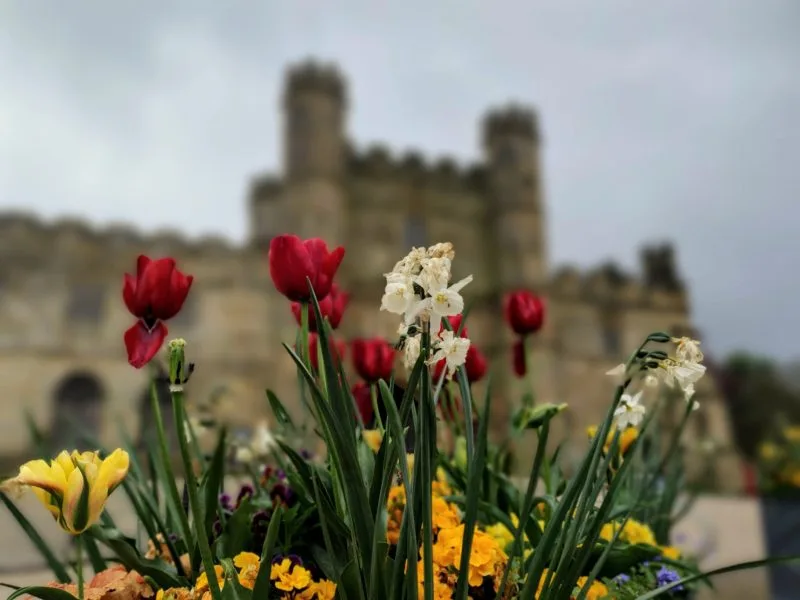
The Battle of Hastings is arguably considered to be the most influential battle in the history of England because, simply put, this one single event changed everything. It saw the end of the Anglo-Saxon rule, which had existed since the end of the Roman age. The Norman conquest changed the English language with the introduction of French words, such as the word Royal, and saw the introduction of the motte-and-bailey castles which today are still dotted across the country! Yes, many of our favourite castles in the UK (including Pevensey Castle) were all built following the Norman Conquest. It is little wonder why Battle Abbey is considered one of the most historical places in England.
If you love learning about the multitude of historical places in the world then you absolutely must visit Battle Abbey because you’ll be able to walk the actual battlefield where the Battle of Hastings took place in 1066, you will be able to learn about the events which took place in the lead up to the Norman invasion, and you’ll be able to capture some great photos of the historic building ruins.
Where is Battle Abbey?
Battle Abbey, originally built in 1070, is located in the town of Battle. Battle is one of many small towns in the England, in the county of East Sussex, situated between Kent and West Sussex and sits on the edge of English Channel, some might say it’s the perfect location for a landing spot for a particular Duke from Normandy.
If you’re driving from East London, like we did, then you’re looking at about a 90 min drive depending on traffic and road works. If you’re not from the UK then here’s a little tip, always expect roadworks the main motorways. It’s always a good idea to leave early and plan to get to Battle Abbey for open.
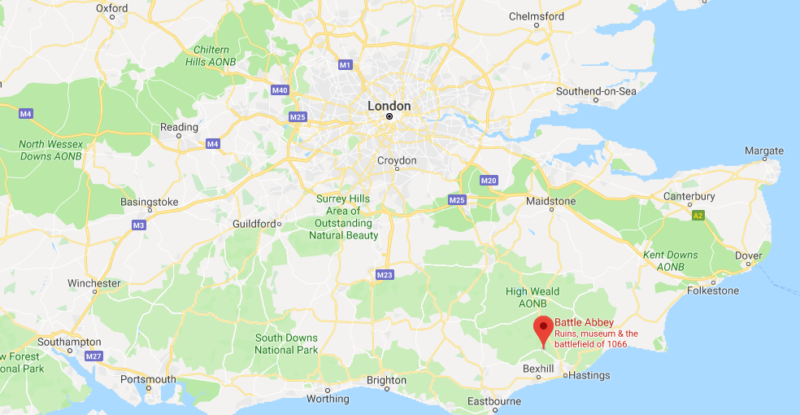
If you’re planning on taking the train to Battle Abbey then head to London Bridge and catch the Southeastern train going to Hastings. The journey from London to Battle will take about 70 minutes but you will need to factor in the time it takes to get to London Bridge.
A Brief History
Ok, so I’ll put it out there now, if you’re not interested in the details leading up to the 1066 Battle of Hastings and just want to know about what to expect from a visit to Battle Abbey then scroll down otherwise let’s get some history underway…
The lead up to the Battle of Hastings goes back to 1065 and the man who ruled England, King Edward the Confessor. The moniker Confessor was given to Edward because he had a reputation for being devoutly religious. Here’s where things get a little challenging for everyone, as the King had no children, following his death on 5 January 1066, there were three individuals who believed the throne should be theirs; Harold Godwinson, Duke William of Normandy, and the King of Norway, Harald Hardrada (Hardrada translates as the Hard Ruler).
- Harold Godwinson, who had apparently been named the heir apparent by King Edward on his deathbed, and was also nominated by the English nobles (the royal council/advisors) who claimed him the rightful King of England.
- Harald Hardrada, King of Denmark, who claimed the throne through the bloodline of King Cnut, a previous Viking King of England
- William, Duke of Normandy, who claimed the English throne as promised to him by King Edward.
The events which followed next set in motion the path leading to the Battle of Hastings in 1066.
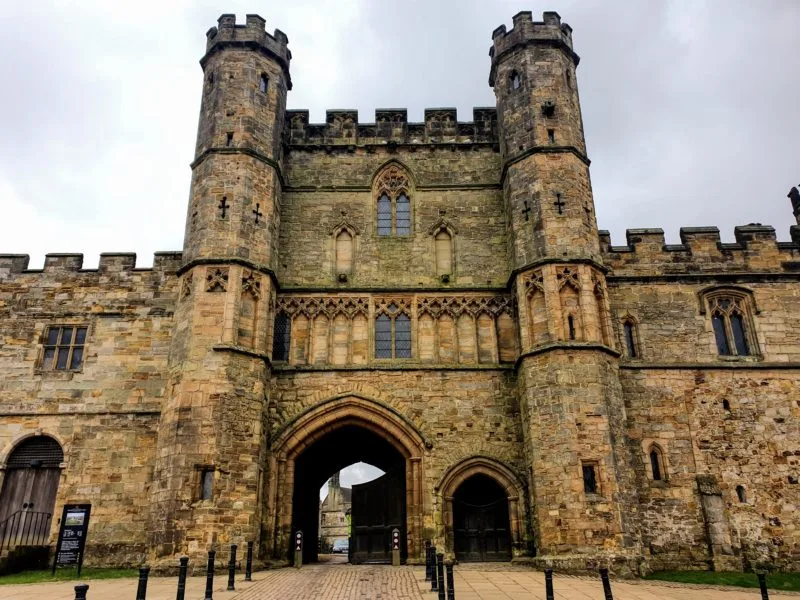
Following the death of King Edward in 1066, Harold quickly ascended to the English throne and held his coronation the day after Edward’s death (and the same day as his funeral) whilst word of the Edward’s demise and Harold’s ascension as England’s new king slowly made its way to Normandy and Denmark, triggering invasion plans drawn up by Duke William and Harald Hardrada respectfully.
It’s interesting to note that William claimed Edward promised him the throne during William’s visit to England in 1051 and that Harold Godwinson supported this claim during Harold’s visit to Normandy in 1064 (where Harold had pledged his loyalty to William). And when Harold ascended to the throne, William saw him as a breaking his sacred oath and used this to leverage a blessing from Pope Alexander II for the invasion of England. The invasion then became more of a holy crusade and the Normans marched into battle under a cross banner which had been blessed by the Pope.
Harald and 300 Viking longships, sailed along the River Ouse towards the English city of York and on 18 September 1066, where they defeated a Saxon army at the Battle of Fulford. This led to the newly crowned King of England to gather his army and head north to battle the invading Vikings. Did you know that Harald Hardrada was aided in his quest by Tostig Godwinson, the half-brother of Harold? The clash between King Harold Godwinson and the Viking army on 25 September was to be known as the Battle of Stamford Bridge, a decisive victory for the King Harold and resulted in the death of Harald Hardrada (and Tostig) and the retreat of the Viking raiders. For the time being anyway.
It was in the days after the victory at the Battle of Stamford Bridge, on 28 September, when Duke William and his 7000 strong army arrived in England, ready to stake his claim for the English throne. The landing site of the Norman army were the calm waters of Pevensey Bay, home of Pevensey Castle, a former Roman shore fort, 10 miles from what was to become the key battleground two weeks later. Whilst William used this time to prepare for battle, King Harold and his tired army made a hasty march south, almost 300 miles (482 km), for the ensuring battle, only stopping briefly in London for supplies and more soldiers.
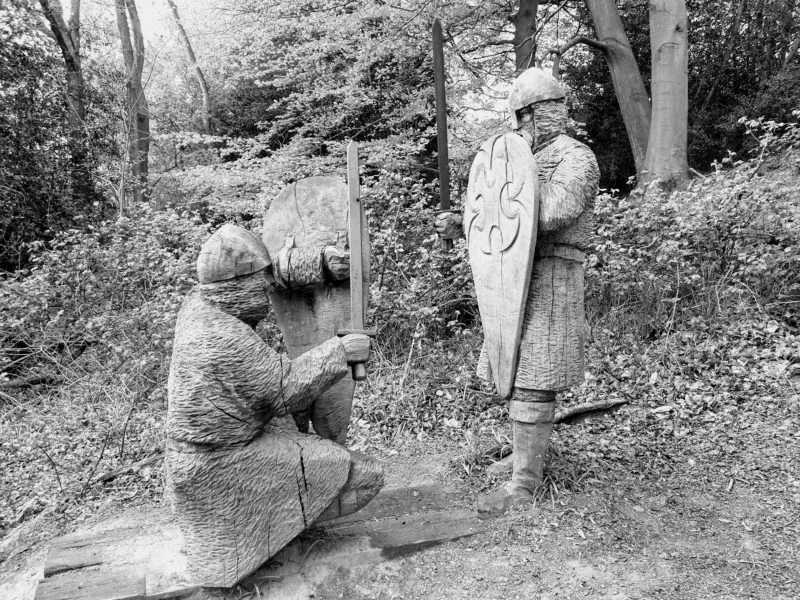
It was on Saturday 14 October 1066, where the army of William waged war with the army of King Harold at the battleground, now known as Battle Abbey, located 7 miles from Hastings. The Norman army had a combined force of armoured foot soldiers, knights on horseback, archers whilst Harold’s army consisted solely of infantry, a strategy which worked well in their previous battle with the Vikings (also combined with the element of surprise). Harold chose a battleground which provided his army a distinct higher ground advantage, it prevented William’s horseback cavalry from charging uphill and thus Harold could protect his men.
The battle lasted many long hours with losses inflicted on both sides. There were 2 decisive moments in the battle where the battle lines were broken as the Normans feigned retreat and were pursued by the English army before turning to face them for battle with the support of the knights on horseback who turned the tide of the battle.
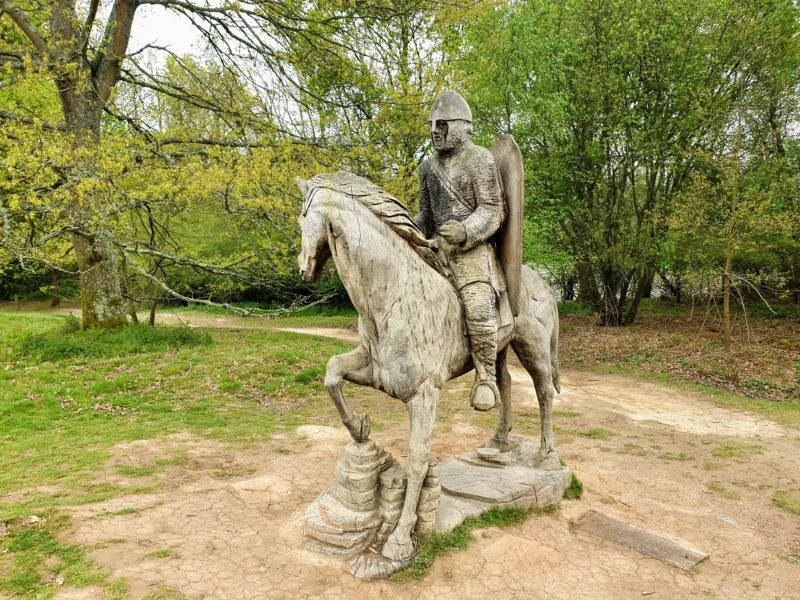
There has been a long debate over how King Harold lost his life during the battle, the most popular and enduring of all stories was that he was shot in the eye with an arrow, as embroidered on the Bayeux Tapestry. The truth of how King Harold lost his life in the Battle of Hastings will be forever unknown but that’s not going to stop generations of people from arguing about it. Everyone has an opinion.
Once the battle was over, William was the victor and would be known by a new name from that point on, William the Conqueror, who was crowned King of England on Christmas Day in 1066.
The rest, as they say, is history.
And speaking of history, following our visit to Battle Abbey I really wanted to learn about about 1066 and the Battle of Hastings so I bought a copy of The Norman Conquest by Marc Morris which I absolutely LOVED! If you love history then I can’t recommend this strongly enough.
What to Expect from a Visit to Battle Abbey
A visit to Battle Abbey is more than just walking around the battleground reading some information boards, there’s actually a few different exhibitions which provide a lot of context and background information to help you understand the historical significance of the Battle of Hastings.
Battle Abbey can be broken down into the following areas; the 1066 Battleground, Gatehouse Exhibition and Viewing Platform, Visitors Centre, and the Abbey Ruins.
The first thing to keep in mind is that a visit to Battle Abbey is incomplete without the audio guide, it’s comprehensive and provides a lot of context for all the different exhibitions so make sure that you take it.
When we visited we were advised to take a walk around the battleground before visiting the other exhibits but we visited the Gatehouse Exhibition and Visitors Centre first which actually provided a lot of historical context by the time we started our walk about the battleground. We’d suggest doing the same during your visit too.
The Gatehouse Exhibition
Once you have your tickets and multimedia guides then step out into the grounds of Battle Abbey and head to your left you’ll see an open doorway with a stone stairwell heading up into an unknown area. This is the entrance to the Gatehouse Exhibition. The gatehouse was originally part of a series of buildings which marked the entrance to the abbey district. After the site moved into public ownership in 1976, the gatehouse was refurbished a museum and that’s how we find it today.
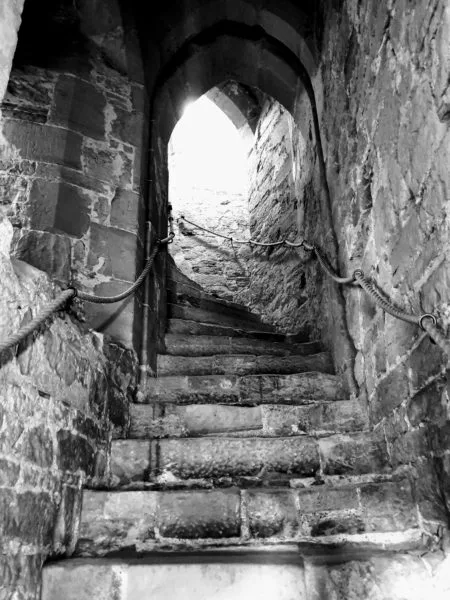
The museum is comprised of multiple rooms over several floors including the rooftop viewing platform which provides an eagle-eyed view of the surrounding landscape.
The first floor contains the former exchequer room and a room detailing the specifics of a former abbey church, home to Benedictine monks. In the main foyer of the exchequer room is a replica of a 15th century sword which found onsite in Battle Abbey, the original is on display in the National Museum in Scotland.
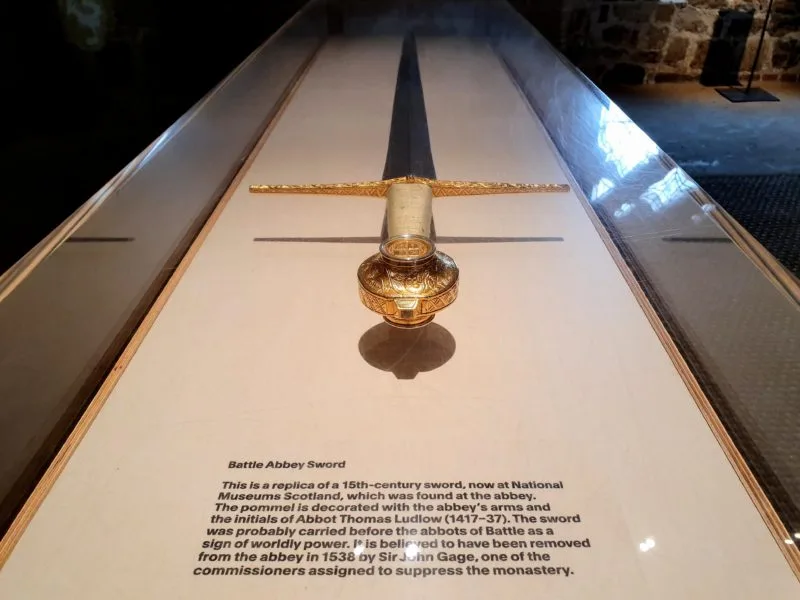
The second floor contains various artifacts including a really interesting photo album which contains photos from the 950th anniversary celebrations back in 2016. Plus, if you’ve ever wanted to find out what you’d look like as a part of William the Conqueror’s army then you will have the chance…
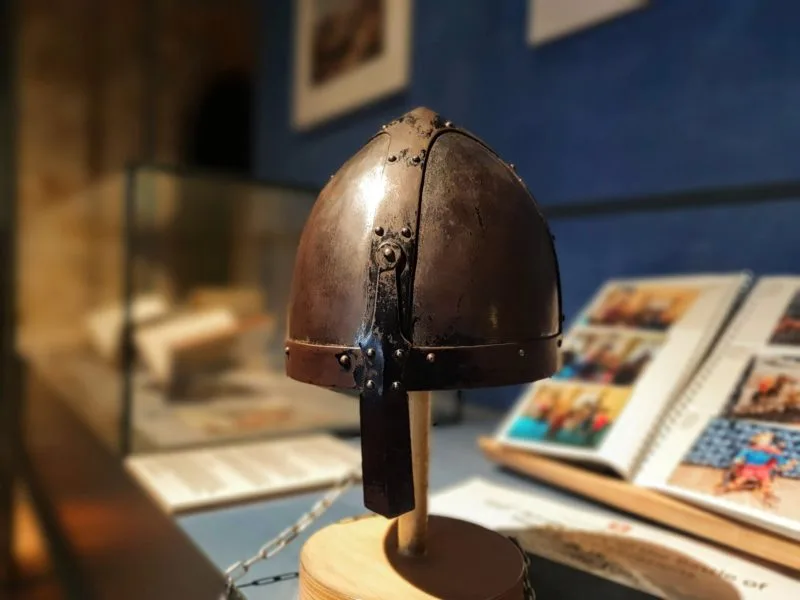
The next stop is the viewing platform which provides a birds eye view of the surrounding area, including the 13th century guest house which was the lodgings of the important visitors to the abbey, the Battle Abbey school, and the Chapter house.
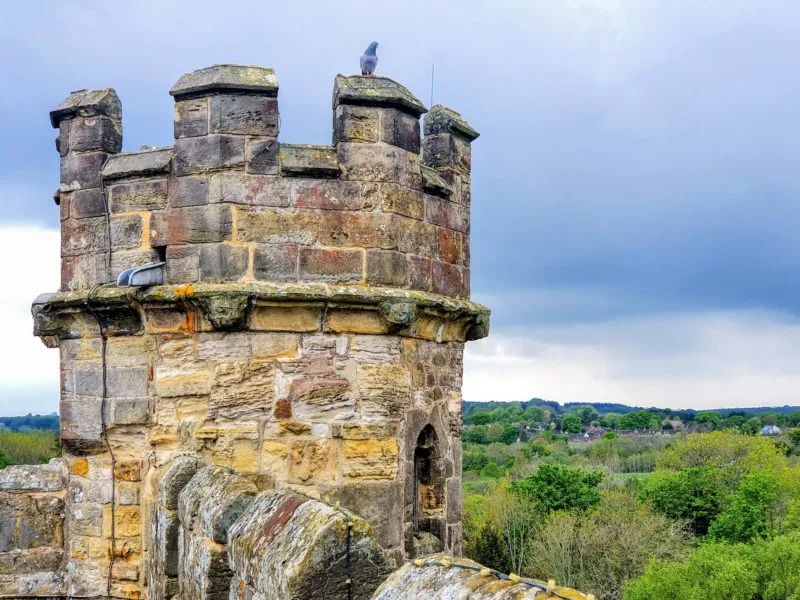
Battle Abbey Visitors Centre
Once you’ve spent some time enjoying the historic gatehouse and museum within, it’ll be time to head over to the Visitor Centre, located to the right side of the Gatehouse. Roma and I loved exploring the Visitors Centre because it provided a great deal of historical context which really helped us understand the background to the Battle of Hastings.
The visitors centre is comprised of two parts, an upstairs and downstairs. The upstairs is the level you first enter and contains a cafe and some interesting history timeline. There’s a staircase which leads you downstairs to the best part the Visitors Centre.
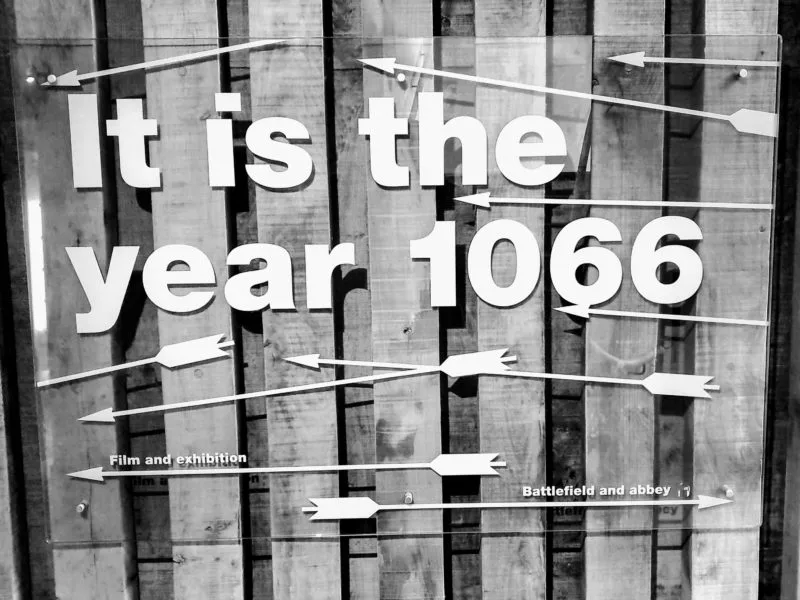
The downstairs was probably our favourite exhibition, outside of the actual battleground because it was a space designed to inform visitors about the context of 1066. The space was split into two parts, an area dedicated to English history and an area on Norman history and told through a variety of different mediums; a really interesting documentary which we sat through three times, a multitude of information boards, comprehensive family trees, and even replica weapons.
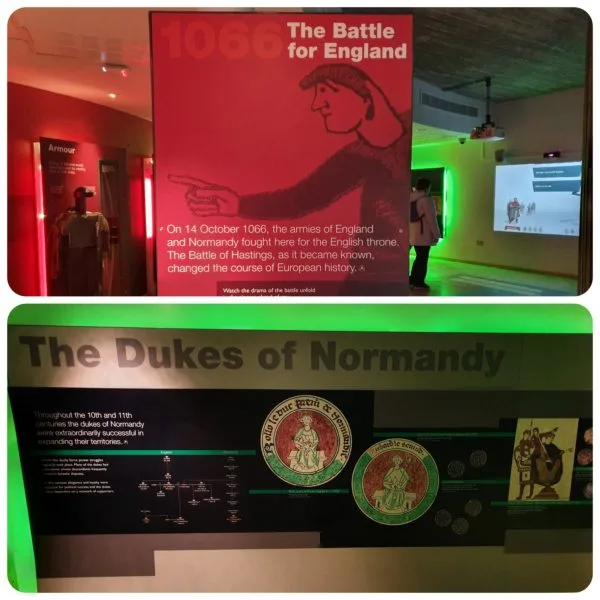
The Battleground
Once you’ve explored the Gatehouse and the Visitor’s Centre then it’ll be time to set out to explore the Battle of Hastings battleground. There are two trails available, the Wood Sculptures trail which is the full walking path and lasts about 60 min (depending on how often you stop to take photos) and the shorter Terrace walk which provides the perfect vantage point to view the battlefield (especially during wet weather) Both trails are in sync with the audio guide which ensures that all visitors receive all the information.
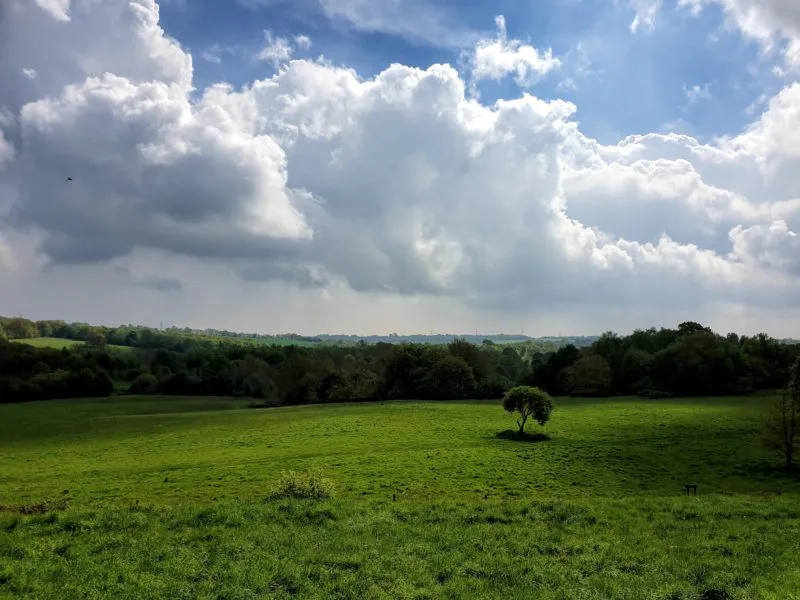
We opted for the longer walk and enjoyed some time in the outdoors on a sunny day and taking photos of the various wooden sculptures dotted throughout the walking path. If it was raining though, I think the shorter terrace would have been selected.
Abbey Ruins
The Norman victory at the Battle of Hastings and William’s coronation as the King of England on 25 December 1066 saw the beginning of a new powerful era not only for England but for Europe as a whole. However, the extreme violence perpetrated during the battle required William to atone for his blood spilled and lives lost. This was the foundation of Battle Abbey.
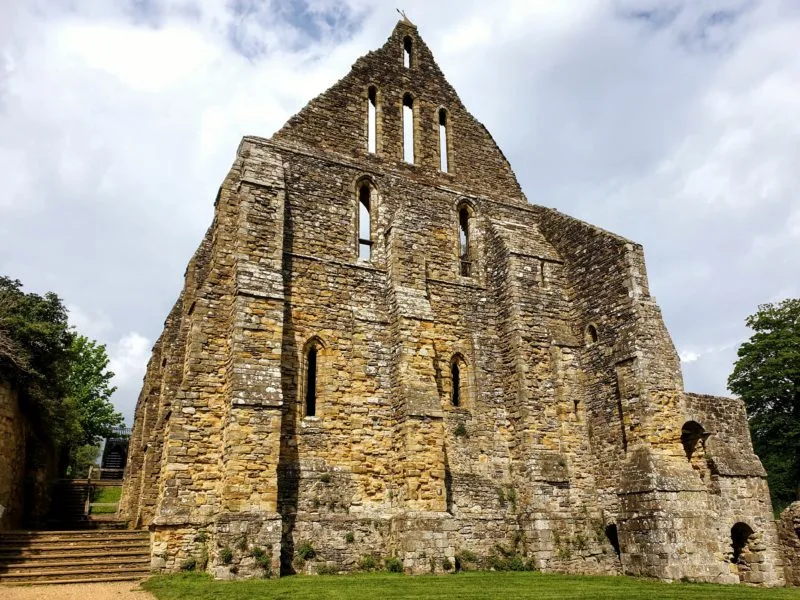
Battle Abbey was founded in 1071, 5 years after the Norman victory, and following strict instructions from William that the high altar was to be placed on the very spot where King Harold fell during the battle. The building was consecrated in 1094 in the presence of William’s son, King William Rufus.
The Abbey’s power and importance was brought to an end under King Henry VIII’s Dissolution of the Monasteries in 1538. The Abbey remained in private hands until 1976 and then was purchased by the state. Battle Abbey is now maintained by English Heritage.
It is important to state that the original abbey built as the memorial to those who died in battle no longer stands today and the abbey ruins date from the 13th to 16th century. You can visit the site of where the original Battle Abbey once stood in 1094 which has a grey slab commemorating the location of the high altar, which was placed on the very spot where King Harold Godwinson died in 1066.
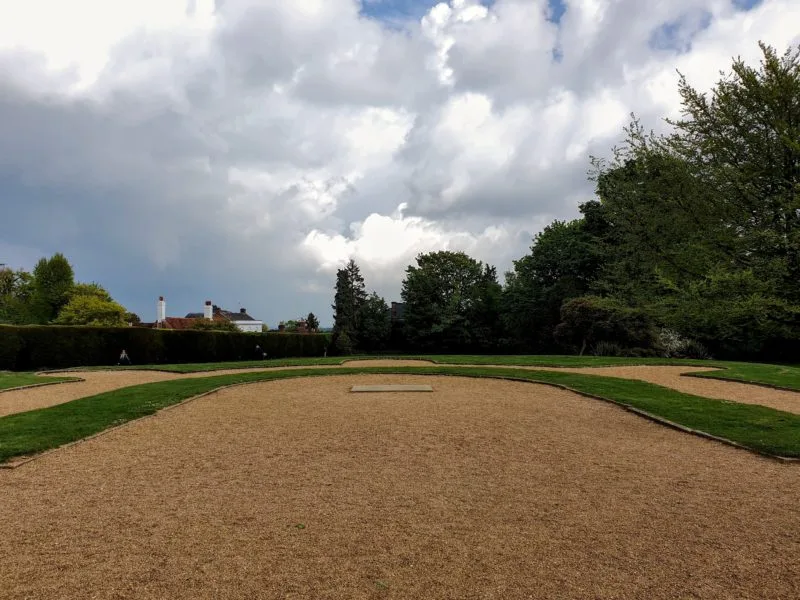
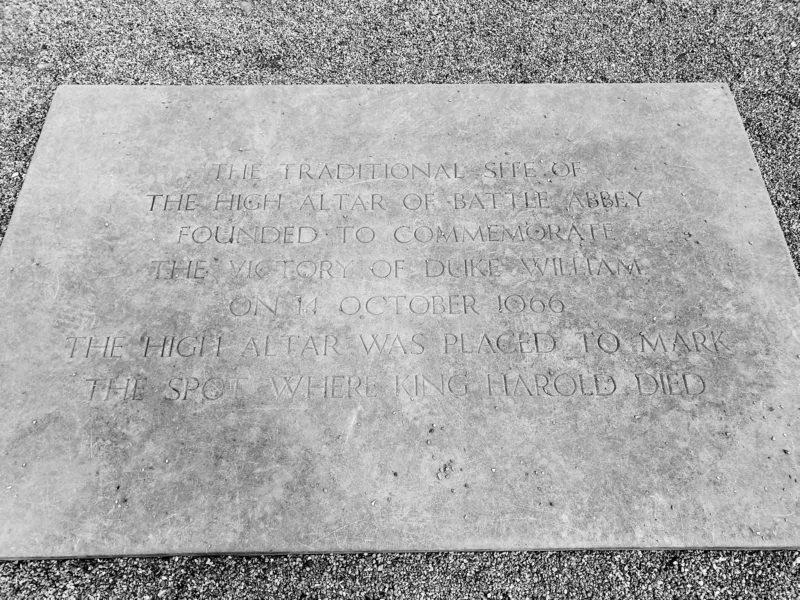
The Bayeux Tapestry
You can’t visit Battle Abbey or write about the Battle of Hastings without mentioning the Bayeux Tapestry, the single most important historical reference to 1066 which details the events leading up to, and including, the battle between William, Duke of Normandy and King Harold for the English Crown.
The Bayeux Tapestry is an uninterrupted 70 metre (230 ft) long by 50 cm (20 in) embroidery which consists of various panels which visually tell the story of the events culminating in the Battle of Hastings. Despite its name, it isn’t actually a tapestry, it’s an embroidery. The difference being, a tapestry is traditionally woven on a loom and an embroidery is where threads are sewn into fabric to form a picture.
The Bayeux Tapestry is thought to have been created in the years following the Norman conquest of England, likely on behalf of Bishop Odo, half-brother of William the Conqueror.
The tapestry is one of the single most important historical relics depicting the lead up to, and actual battle of, the 1066 fight for the English crown. As with most historical documents created after the fact, there is bias and retrofitting to suit the victors however this does not detract from the monumental historical significance that the tapestry contains. The information and detail contained in each of the panels is unparalleled as it provides incredible historical insight into the people, clothing, jewellery, armour, and rituals of the 11th century. The Bayeux Tapestry has helped shape today’s understanding of the Battle of Hastings and should be experienced in person.
Russell’s Recommendation
If you’re a fan of history or consider yourself a history enthusiast (as I do) then I suggest you get ready to take plenty of notes during your visit to Battle Abbey! Whether that’s using your phone or an actual notepad, there’s so much detail available on information boards and audio guides that notes help with capturing it all.
And speaking of audio guides, make sure you pack your own headphones so that you don’t have to walk around Battle Abbey holding the guide to your ear, makes it so much easier to take photos unencumbered.
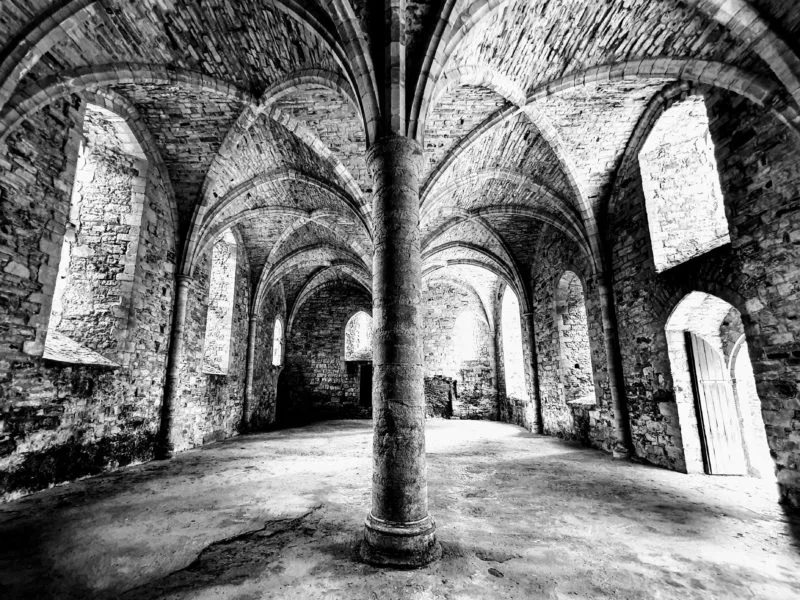
What Do We Wish We Knew Before Going?
Be prepared to spend longer than you expect, there’s so much to see. Also, keep in mind if you decide to take the longer walk around the grounds that you do walk through fields so sturdy shoes are recommended and it is England so you might need an umbrella!
The Essentials
- Location: Battle Abbey, Butter Cross, High St, Battle TN33 0AD
- Ticket Prices: English Heritage Member: Free, Adult: £14.50, Child: £8.60, Concession: £12.70
- Opening Hours: 10:00am – 5:00pm (depending on time of year. Check website for your planned visit)
Battle Abbey Parking
- Parking is conveniently located next to Battle Abbey for £4.00 which you pay on exit. The good news is if you’re an English Heritage member then parking is free.
Final Thoughts
It doesn’t matter if you’re a lifelong history fan or just looking for an interesting day out discovering some of the historical places in the UK, there’s something for everyone at Battle Abbey, one of the most incredible historic English cities, and let’s face it, there’s something so incredible about exploring the grounds where English history fundamentally changed almost 1000 years ago! Happy Travels
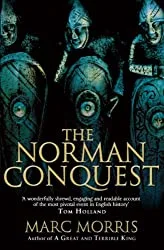
[…] English Heritage, or day trips to the coast of Hastings and St Leonards, or historic towns such as Battle and […]
[…] Exploring Battle Abbey […]
[…] One of the city’s most famous landmarks, Norwich Castle was built by the Normans as a Royal Palace 900 years ago in the aftermath of the Norman conquest of England when William the Conqueror ordered its construction because he wished to have a fortified place in the town of Norwich. (Interested in more about William the Conqueror, read Russ’s post about Battle Abbey!) […]